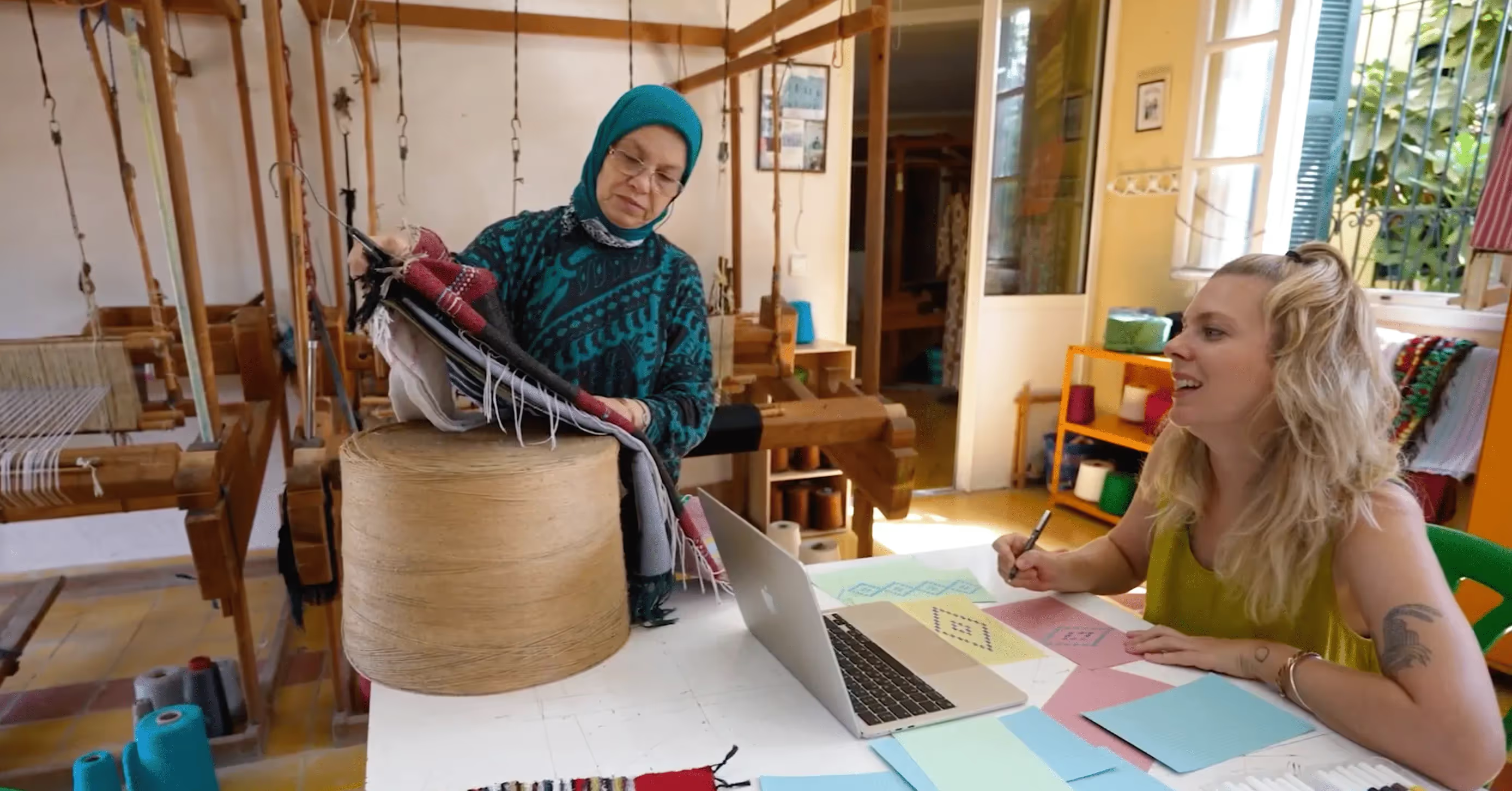Maria Varela
Maria Varela is an interdisciplinary artist and assistant professor of fine and applied arts at the University of Western Macedonia. Her research focuses on creative applications of new technologies, textile data visualization and collaborative production with women's communities. She experiments with the ways in which the archival event is transcribed from the digital environment to the physical world. She creates digital and physical artifacts and events, exploring concepts such as identity, memory, tradition and their constructions. In 2021, she received the Selected Art Award from the Taoyuan Museum of Fine Arts, Taiwan. Her work has been shown in numerous international exhibitions: Méditerranées(Mucem, Marseille), Symbiotics (EMST, Athens), Plasmata II (Onassis Foundation,Ioannina), Circular Cultures Milano Design Week (Onassis Foundation - British Council,Milan), Handmade (EMST - Schwarz Foundation - Art Space Pythagorion, Samos),Statecraft (EMST, Athens), The event of the thread (MOMus, Thessaloniki), International ArtAward (TMoFA, Taoyuan), 19th Contemporary Art Festival Sesc_Videobrasil (Sesc Pompeia,São Paulo), 16th International Media Art Biennale WRO (Wrotslav), No Country for YoungMen (Bozar Palais de Beaux Art, Bruxelles), Future past - Past future : Transmediale (Berlin), AFresh (EMST, Athens), Visual Dialogues (Onassis Foundation, Athens).

In Tangier, my research will focus on the complex relationship between local crafts, particularly weaving, and broader theoretical concepts such as material ecology and image ontology. By examining artisanal techniques of manufacture, I will explore how materiality and ornamental imagery challenge conventional notions of object, meaning and medium. I will seek to understand how form and materiality become inseparable and reveal coded narratives. Through this lens, I seek to investigate the mediality of communication inherent in these craft traditions. I am particularly interested in how these objects act as a form of communication, with their potential to change the way we think about the relationship between creators/messengers and the stories or traces they leave behind.



.webp)















